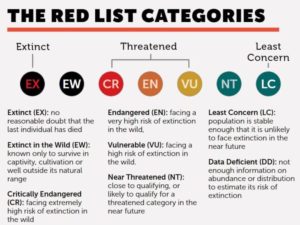Published on: December 9, 2021
SPECIES EXTINCT IN THE WILD
SPECIES EXTINCT IN THE WILD
NEWS
Two species of plants first collected by botanists more than 125 years ago from Meghalaya and the Andaman Islands are now extinct in the wild
ABOUT
- Classified under the genus Boesenbergia, the species belong to the family of Zingiberaceae, the ginger family of flowering plants.
- Boesenbergia rubrolutea was first collected from the Khasi Hills, Thera, in Meghalaya on October 10, 1886.
- Specimens of Boesenbergia albolutea were collected from the Andamans and sent to the Royal Botanic Gardens, Kew, England, in 1889.
- Possible reasons for their disappearance include climate change, human interference and overexploitation or natural calamities

MAHITI FOR PRELIMS
IUCN RED LIST
- Full name – IUCN Red List of Threatened Species (also known as the IUCN Red List or Red Data List)
- Founded in 1964
- World’s most comprehensive inventory of the global conservation status of biological species (Animal, fungus and plant species).
- Authority – International Union for the Conservation of Nature (IUCN)
- Updated at least twice per year
- Categories in the IUCN red list:
- Extinct (EX) – No known individuals remaining.
- Extinct in the wild (EW) – Known only to survive in captivity, or as a naturalized population outside its historic range.
- Critically endangered (CR) – Extremely high risk of extinction in the wild.
- Endangered (EN) – High risk of extinction in the wild.
- Vulnerable (VU) – High risk of endangerment in the wild.
- Near threatened (NT) – Likely to become endangered soon.
- Least concern (LC) – Lowest risk. Does not qualify for a more at-risk category. Widespread and abundant taxa are included in this category.
- Data deficient (DD) – Not enough data to assess its risk of extinction.
- Not evaluated (NE) – Has not yet been evaluated against the criteria

